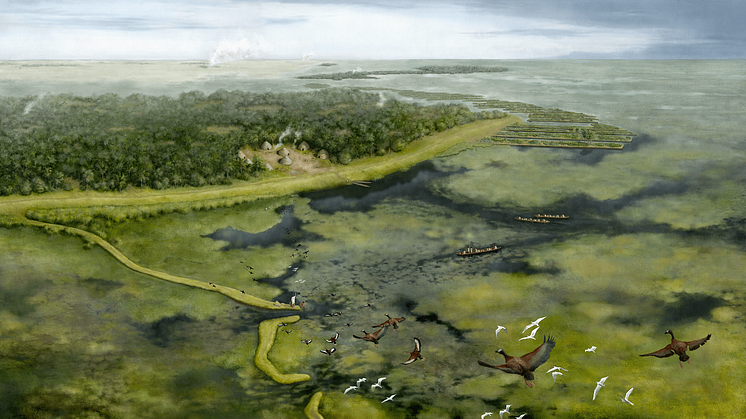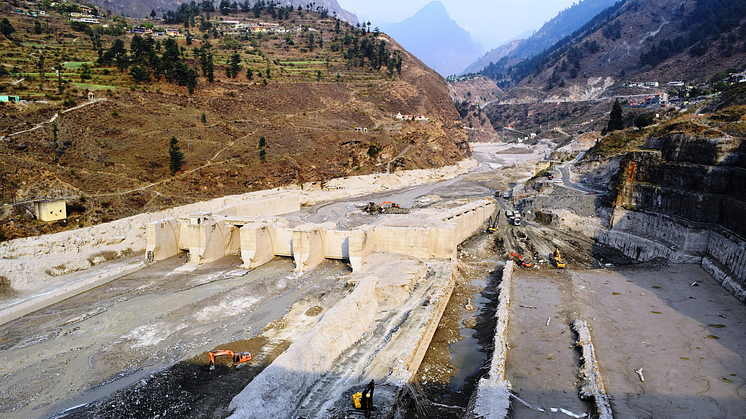
Press release -
Study sheds light on pre-Columbian life in understudied area of Amazon
A new study shows that pre-Columbian people of a culturally diverse but not well-documented area of the Amazon in South America significantly altered their landscape thousands of years earlier than previously thought.
The findings, published in the journal Proceedings of the National Academy of Sciences, show evidence of people using fire and improving their landscape for farming and fishing more than 3,500 years ago.
This counters the often-held notion of a pristine Amazon during pre-Columbian times before the arrival of Europeans in the late 1400s.
The study, which was conducted by experts from Northumbria University and the University of Central Florida, also provides mores clues to the past of the diverse, but not well-documented, cultures that live in the area known as the Llanos de Mojos in northeastern Bolivia.
“This region has one the highest diversity of languages in the world, which reflects distinct ways of life and cultural heritage,” says study co-author John Walker, an associate professor in the University of Central Florida’s Department of Anthropology.
“We know something about the last 3,000 to 4,000 years of, say Europe or the Mediterranean, but we don’t have some of that same information for the people here. That makes this an incredible story waiting to be written.”
Part of the way researchers hope to write these stories is to uncover the economic practices of the distant past.
The flat, wetland landscape of the Llanos de Mojos is used for cattle ranching today, but archaeologists have noted for years the evidence from remnants of pre-Columbian raised fields and fish weirs for aquaculture.
These remnants indicated the land was once used instead for farming and fishing. The archaeologists just didn’t know when or how far back in time these activities started — until now.
Previous research pointed to a date of about 300 C.E., or about 1,700 years ago. However, the new study combined expertise from multiple disciplines, such as anthropology, paleoethnobotany and paleoecology, to indicate that intensive land management started much earlier, at about 1,500 B.C.E, or about 3,500 years ago.
As part of this study, the researchers commissioned an illustration by artist Kathryn Killackey. The illustration is a representation of the pre-Columbian landscape around 3,500 years ago, based on their reconstruction, and details what they believe the region would have looked like at the time.
“This finding is important because it provides evidence that the Amazon is not a pristine wilderness but has been shaped and designed by indigenous people thousands of years before the Spanish arrived,” Walker says.
This is new information for both the history of the cultures of the Amazon, which have not been studied as much as other cases, like the Mayas or Incas, and for the area, which is often thought of as an untouched world before the arrival of the Spanish.
Neil Duncan, the study’s lead author and a paleoethnobotanist in the University of Central Florida’s Department of Anthropology, specializes in studying archaeological and paleoenvironmental plant remains to learn how humans and plants interacted in the past.
With help from the research team, Duncan extracted two, five-foot long cores of earth from two locations about 13 miles apart in the Llanos de Mojos.
By examining these cores, Duncan found corn and squash phytoliths dating as early as 1380 B.C.E and 650 B.C.E, or about 3,000 years ago. Phytoliths are microscopic silica particles from plant tissue, and the findings suggest these were crops grown in the numerous raised fields that dot the area.
Colleagues from Northumbria University then examined the cores for charcoal, pollen and diatoms, which are single-celled alga indicative of aquatic environments.
Both cores showed similar trends of initial dry conditions in the oldest layers of earth, followed by increased wet conditions and increased use of wood burning, as evidenced by the presence of high diatom concentrations and charcoal concentrations, respectively. The researchers say wood burning could be for cooking, pottery, warmth and more.
“This is the first time that we’ve been able to show in the past how people managed their land and water resources in a coupled system,” says Dr Bronwen Whitney, an associate professor of geography and environmental sciences who led the research by the Northumbria University team. Dr Whitney is an expert in historic environmental changes, particularly in South and Central America.
“The intensification of plant, fire and water management occurred at the same time, which emphasizes how farming or fishing were equally important to the people of the region,” Dr Whitney added.
Also of note is that the shifts in the two cores to more intensive land management happened at different periods, the researchers say.
One core, known as the Mercedes core, showed the shift to wetter conditions and increased fire use starting at 1,500 B.C.E, or about 3,500 years ago. The other, extracted from a location about 13 miles farther south and known as the Quinato-Miraflores core, showed the shift occurring at about 70 B.C.E., or about 2,100 years ago.
Since broadscale climate changes would have affected both areas at the same time, the time difference between the two cores suggests humans were purposefully engineering the land, including draining water in some areas, retaining it in others, and using trees for fuel.
“So, what’s happening in the landscape is that that it’s becoming wetter, and we think that some of those trees are being flooded out and so they're not as well represented,” Duncan says. “And if things are getting wetter then we shouldn’t see more charcoal. So, the interpretation is that we would only see these high amounts of charcoal if it’s humans doing some very intentional and intensive burning.”
The researchers say the next steps are to investigate the function, history, and role of the area’s fish weirs and to apply new techniques to date earthworks directly and reconstruct a more detailed agricultural history for the region.
The research was funded by a U.S.-U.K. collaborative funding partnership with the National Science Foundation (1758273) and the Arts and Humanities Research Council (AH/S00128X/1).
Their study, Pre-Columbian fire management and control of climate-driven floodwaters over 3,500 years in southwestern Amazonia, is now available in the journal, Proceedings of the National Academy of Sciences.
Topics
Categories
Northumbria is a research-rich, business-focused, professional university with a global reputation for academic excellence. Find out more about us at www.northumbria.ac.uk --- Please contact our Media and Communications team at media.communications@northumbria.ac.uk with any media enquiries or interview requests ---







